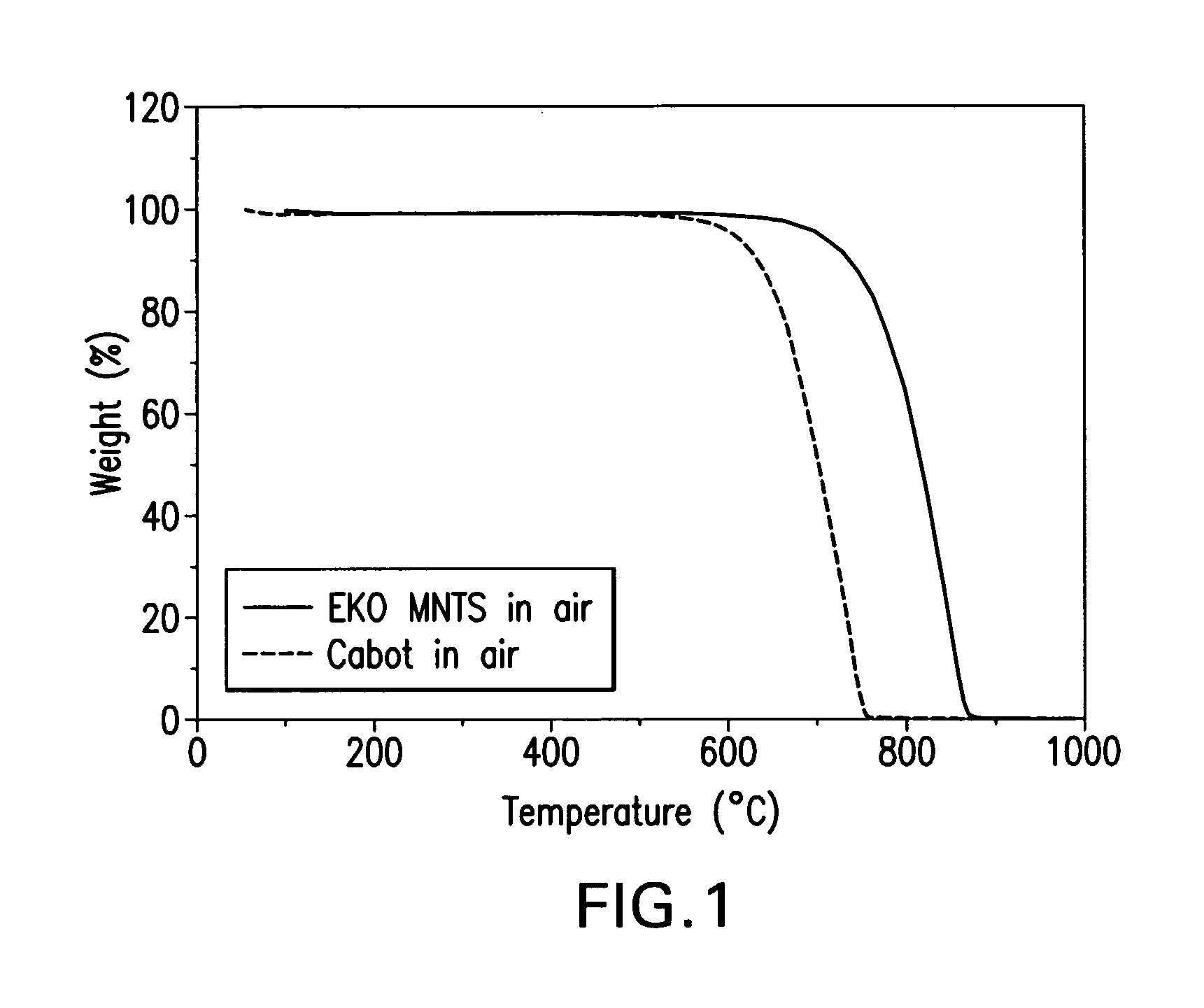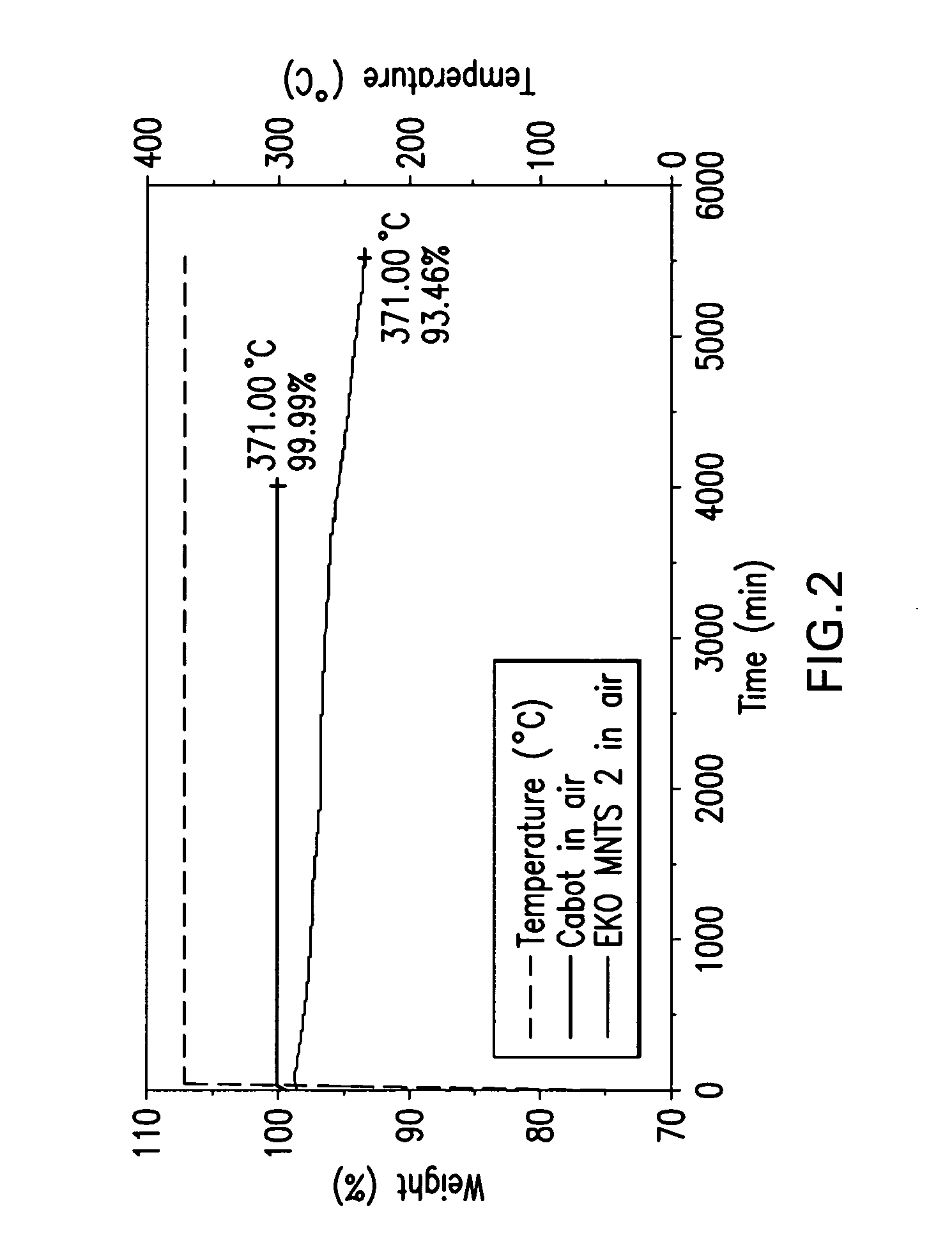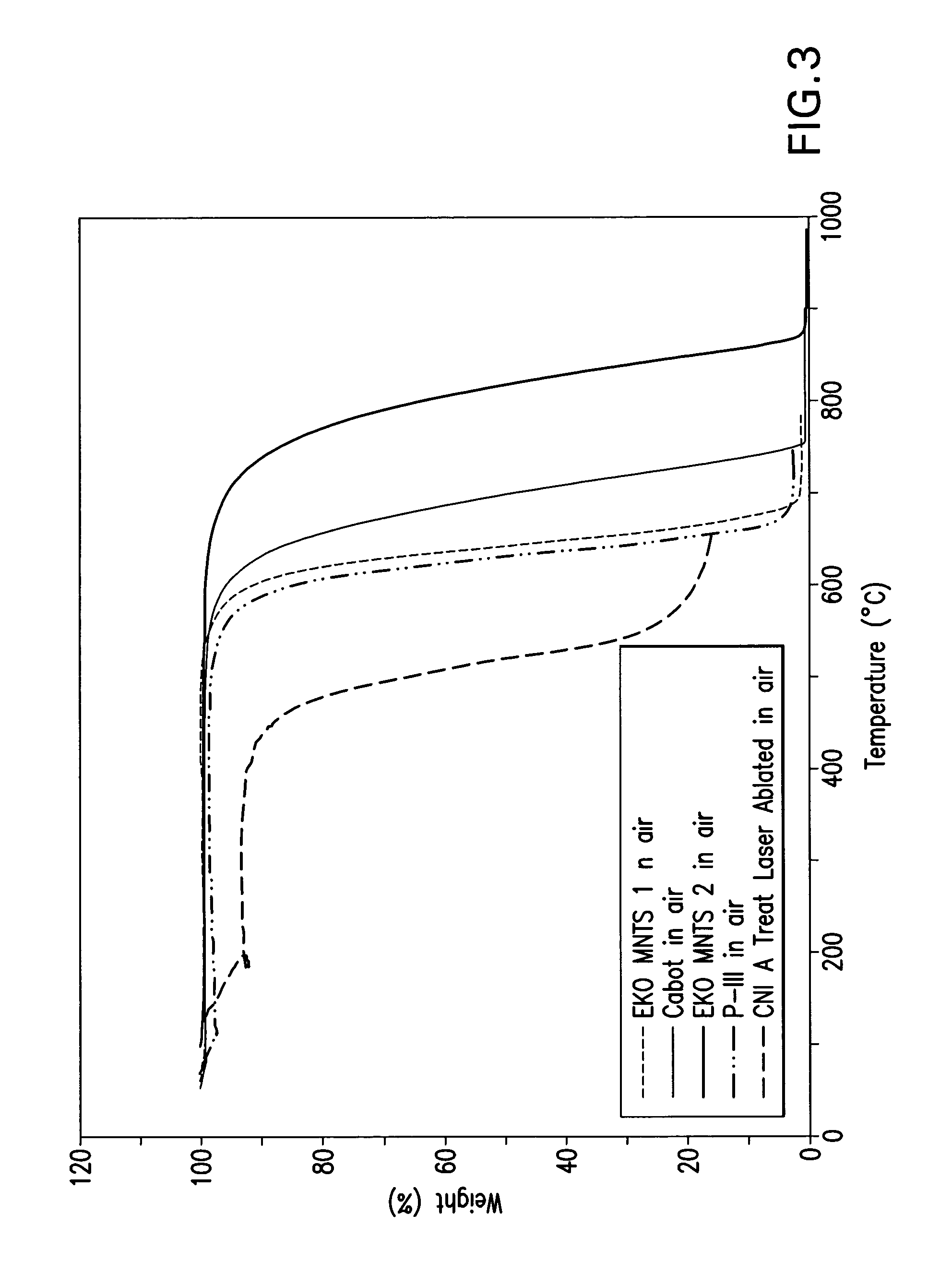Electrically conductive coatings with high thermal oxidative stability and low thermal conduction
- Summary
- Abstract
- Description
- Claims
- Application Information
AI Technical Summary
Benefits of technology
Problems solved by technology
Method used
Image
Examples
example 1
[0047] Thermal Oxidative Stability (TOS) was evaluated for carbon black, carbon nanotubes and carbon nanofibers. Two plots were generated: 1) short term TGA and 2) Long-term TGA ˜100 hours at 700° F., collected on both high electrical conductivity carbon black (Cabot Corporation) and purified multiwalled carbon nanotubes (see FIG. 1). From this data it is clear that the onset temperature of degradation is higher for the carbon tubes than for the carbon black (CB). Also, there were very low (<0.3%) residual weight on the nanotubes, indicating very low noncombustible contaminates like metals. EKO MNTS are multiwalled carbon nanotubes (Electrovac GesmbH, Austria).
[0048] The long-term testing shows gradual weight loss for the CB throughout the 100 hours period of the test with total loss of ˜5.5% Wt. However for the nanotubes, zero weight loss was recorded after 70 hours at 700° F. No change in weight after 70 hours at 700° F. Subsequent testing at 850° F. showed the same result. Test ...
example 2
[0052] Additional Thermal Oxidative Stability (TOS) evaluations were performed for different form of carbon for use in conductive coatings. The ramp data of FIG. 3 indicates two factors of interest when evaluating the TOS of neat carbon in air. CNI A are single walled carbon nanotubes (CNI, Inc., Houston, Tex.). The first is the onset of degradation and the second is the residual weight after complete decomposition. Note that the residual weight seems related to the onset temperature; which could be due to metal content. Short term TGA data were collected using conditions where the sample is ramped till failure, and correlates to the long term TGA test performed at isothermal hold.
[0053] Essentially, the higher the on-set temperature during ramp to failure, the lower the weight loss during isothermal hold. Additionally, the lower the residual weight after full decomposing the higher the onset temperature. These patterns could be misleading should be environment or other conditions ...
example 3
Electrical Properties
[0055] Electrical properties as a function of temperature were determined for carbon tube filled urethane and ceramic coatings. Urethane polymers provided the best near-term solution for a well dispersed filled system for coating and optical testing. The castable ceramic (Al2O3) allowed exploration of the high temperature behavior of dilute carbon tube fillers. For simplicity, only data for 0.5% loading of nanotubes in the various matrices is presented in FIG. 4. Higher loading of NTs were tested.
[0056] Electrical resistance for an ESD coating should be between 106 to 1010 ohm per square for most space applications. Additionally the ESD coating should maintain electrical conductivity throughout the operational temperature range experienced in space. Typically, satellites experience wide temperature cycles due to solar radiation combined with the varying flux density of charged particles. On spacecraft with outward-facing dielectric materials (which most are), ...
PUM
| Property | Measurement | Unit |
|---|---|---|
| Fraction | aaaaa | aaaaa |
| Fraction | aaaaa | aaaaa |
| Fraction | aaaaa | aaaaa |
Abstract
Description
Claims
Application Information
 Login to View More
Login to View More - R&D
- Intellectual Property
- Life Sciences
- Materials
- Tech Scout
- Unparalleled Data Quality
- Higher Quality Content
- 60% Fewer Hallucinations
Browse by: Latest US Patents, China's latest patents, Technical Efficacy Thesaurus, Application Domain, Technology Topic, Popular Technical Reports.
© 2025 PatSnap. All rights reserved.Legal|Privacy policy|Modern Slavery Act Transparency Statement|Sitemap|About US| Contact US: help@patsnap.com



